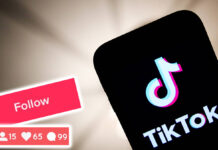For years, social media strategy was built around likes, reach, and the occasional viral hit.
But now, those metrics are more noise than signals.
Algorithms change. Audiences scroll faster than they engage. And brands are waking up to this truth: You don’t own your followers — the platforms do.
That’s why forward-thinking marketers are shifting toward a community-led social media strategy. One that favors connection over content volume, loyalty over likes, and conversation over campaigns.
We’re not just building an audience anymore. We’re building belonging.
Why are brands moving beyond likes?

There are a few good reasons. Let’s break it down.
1. Organic reach is throttled
Instagram? Pay-to-play.
Twitter (sorry, X)? An algorithmic mess.
Even TikTok’s golden moment is now governed by ad dollars and unpredictable For You feed shifts.
That “1 million followers” flex doesn’t matter if only 2,000 people see your post.
2. Feeds are crowded, communities are quiet
In a sea of sponsored posts, your audience is tuning out. But in a curated Discord server or a private WhatsApp group, the noise drops, and attention goes up.
3. Social media feels transactional. Communities feel relational.

People don’t just want content. They want space, identity, and shared values. Communities offer that.
A feed post says “look at us.”
A Discord channel says “come sit with us.”
And yes — it’s a better long-term brand investment
Community is retention, advocacy, feedback, and UGC, rolled into one. It’s CRM, CX, and brand building, without the constant ad spend.
You don’t need millions of followers. You need the right few thousand who will ride with you, build with you, and share your name like it’s their own.
What does a community-led brand actually look like?

Think less “content calendar,” more campfire
Imagine this:
Instead of publishing 15 branded posts a week hoping for one to pop off, you host one AMA in your private Slack group.
Ten power users show up, ask smart questions, and they leave fired up. Two of them create posts about it. One drops a testimonial in a review thread. That momentum? Pure gold.
Now repeat that across a month, with Q&As, first-look access, polls, inside jokes, and shared wins. Suddenly, your brand isn’t “posting content.” It’s creating shared meaning.
This is what community-led social strategy looks like in practice:
- Conversations, not just content
- Owned spaces, not just rented reach
- Participation, not just promotion
And yes. It can absolutely coexist with your social media strategy. It just needs a different mindset.
What platforms work best for building brand communities?

Best platforms for community-led social strategy?
Great question. Here’s how to choose based on your audience and goals.
Discord
Flexible, feature-rich, and great for layered conversations.
Use it if you want channels for updates, off-topic chat, feedback, announcements, and events all in one place.
Perfect for B2C brands, creator-led startups, and product-first communities.
Still underrated. Builds long-term value, especially around knowledge-sharing and niche culture.
Use it if your audience already lives there or you’re solving problems your community Googles.
Perfect for Tech, SaaS, education, finance, or anything with a loyal user base.
WhatsApp / Telegram

Low friction, high intimacy.
Think updates, drops, micro-discussions, and real-time energy.
Use it for Hyper-loyal segments, regional communities, beta access, or limited-time campaigns.
Pro tip: Start small. You don’t need five platforms. You need one space where people show up and care.
How do you build a strong community-led social strategy?
How do I turn my audience into a community?
Start by answering: “Why would someone join this space and stay?”
1. Lead with value, not just vibes
People join for a reason: early access, expert insights, niche memes, support, exclusivity, or identity.
Be clear about what they’ll get, and what they’ll feel.
2. Set the tone early
You’re not just moderating. You’re hosting.
- Define what’s welcome and what’s not
- Encourage intros, responses, sharing
- Use a consistent tone. Whether it’s warm and helpful, quirky and fun, or direct and high-energy
3. Design for contribution, not just consumption
- Feature your members.
- Invite their feedback.
- Make UGC part of your brand story.
A meme from your Discord? Feature it on your main feed. A hot take in the comments? Turn it into a blog. A member story? Highlight it in your email.
Community builds when people feel seen.
What should you measure in a community-led strategy?

How do I track the success of a community-led social strategy?
Forget “likes per post.” You’re playing a different game now.
Track:
- Active participation: Are people replying, sharing, starting threads?
- Return visits: Do they come back? Lurk? Drop links?
- Brand mentions + sentiment: Are they recommending you?
- Community-led content: How much is coming from them, not just you?
Also, start documenting qualitative wins:
- Screenshots of great convos
- Stories of customer support happening in the community
- Moments where the community teaches itself
These are the signals that your brand is part of their identity, not just on their timeline.
Likes are fleeting. Loyalty isn’t.
The content race never ends. But community? That’s the part of your brand people choose to take with them.
A community-led social strategy isn’t just a trend. It’s how brands stay relevant when the algorithms stop playing nice. It’s how you go from marketing at people to building with them.
So yeah, go ahead and chase reach. Post the reel. Drop the tweet.
But don’t forget to build the table where your people actually want to sit.







